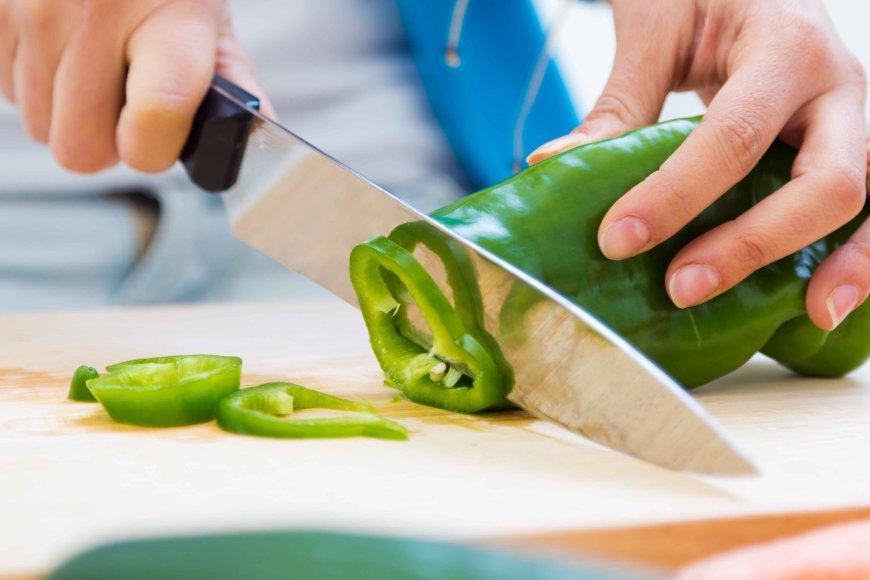German vs. Japanese Knife Sets: Which One Suits You?
When it comes to choosing a quality knife set for your kitchen, two names consistently stand out: German and Japanese knives. These two types dominate the culinary world for good reason

When it comes to choosing a quality knife set for your kitchen, two names consistently stand out: German and Japanese knives. These two types dominate the culinary world for good reason, offering unmatched craftsmanship, performance, and durability. However, each has its distinct characteristics that make it suitable for different cooking styles, preferences, and kitchen needs.https://www.lifesmile.ae/product/cookware-set-29-pieces-with-multiple-layer-granite-coating-with-silicone-handles
In this article, well break down the key differences between German and Japanese knife sets, helping you decide which one is right for you.
Blade Design and Construction
The first noticeable difference between German and Japanese knives lies in their blade design and construction. German knives are typically made using softer steel with a Rockwell hardness rating of 56 to 58. This gives them a slightly thicker blade with a more curved edge, designed to handle heavy-duty tasks such as cutting through bones or tough vegetables. The softer steel makes the knife more durable and resistant to chipping, though it may require more frequent sharpening.
In contrast, Japanese knives use harder steel, usually with a Rockwell hardness of 60 or higher. This results in a thinner, sharper blade with a straighter edge. The harder steel allows the knife to maintain its sharpness longer, making it perfect for precision slicing, dicing, and detailed cutting tasks. However, the trade-off is that these knives are more brittle and can chip if used improperly or for heavy-duty chopping.
Sharpness and Edge Retention
Sharpness is where Japanese knives often shine. Their thinner, harder blades are sharpened at a more acute angletypically around 15 degrees per sideoffering an incredibly sharp edge that glides through food with ease. This makes them ideal for delicate ingredients such as fish, herbs, and fruits, where clean cuts are essential.
German knives, with a broader edge angle of around 20 degrees per side, are less sharp initially but offer a more forgiving and durable edge. They can handle a wider variety of kitchen tasks without dulling quickly, and they are less likely to suffer damage if accidentally dropped or used on hard surfaces.
Weight and Balance
German knives are generally heavier and more robust, providing a sense of power and control, especially for those who prefer a knife with some heft. The full tang designwhere the blade runs through the entire length of the handlegives better balance and strength, making these knives suitable for heavy and repetitive cutting.
On the other hand, Japanese knives are lighter and more agile, which allows for more precision and finesse. Their lighter weight reduces hand fatigue, especially for chefs or home cooks who spend a lot of time preparing meals. The balance point in Japanese knives often leans closer to the blade, which many professionals appreciate for better maneuverability.
Versatility and Specialization
German knife sets tend to include all-purpose knives that can handle a wide range of tasks. A typical German knife set will include chefs knives, bread knives, utility knives, and moreall built to manage everything from chopping meat to slicing crusty loaves.
Japanese knives, meanwhile, are more specialized. Youll find specific designs for particular uses: a Santoku for general slicing, a Nakiri for vegetables, and a Yanagiba for sushi and sashimi. While they excel in their particular tasks, they may not offer the same level of all-around versatility as a German set.
Maintenance and Care
Because German knives are made with softer steel, they tend to be easier to sharpen at home with basic honing tools. They are also more forgiving when it comes to misuse, such as cutting through bone or hard materials.
Japanese knives require more careful maintenance. Their harder blades should be sharpened using whetstones, and they are not suitable for the dishwasher or rough use. Proper care is essential to maintaining their sharpness and avoiding damage.
Price and Value
Both German and Japanese knife sets can be expensive, especially from premium brands. German knives, due to their durability and versatility, are often seen as a long-term investment for everyday cooking. Japanese knives, while also long-lasting when maintained properly, are usually priced based on their specialized craftsmanship and high-quality steel. Types of kitchen knives?
Which One Should You Choose?
The decision between German and Japanese knife sets ultimately comes down to your cooking style and personal preferences.
-
If you want a durable, all-purpose set that can handle everything from heavy-duty chopping to everyday slicing, a German knife set may be the better option.
-
If you value precision, sharpness, and elegance in your kitchen toolsand are willing to care for them properlya Japanese knife set could be the right choice.
Both knife styles offer outstanding quality. The key is to match the set to your needs, ensuring a more enjoyable and efficient cooking experience.
Read more on bippennsylvania.com
Download lifesmile application from app and play store























